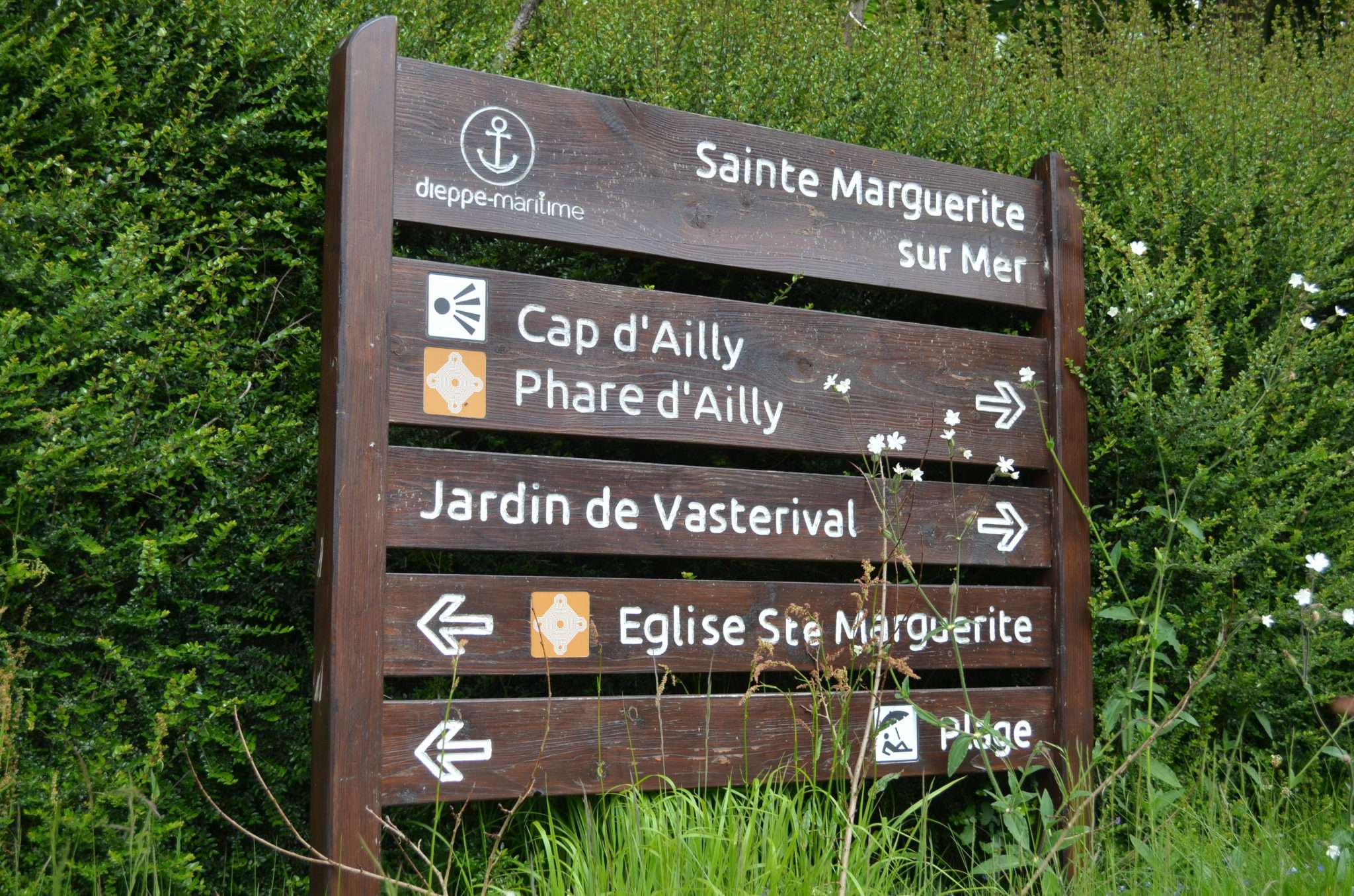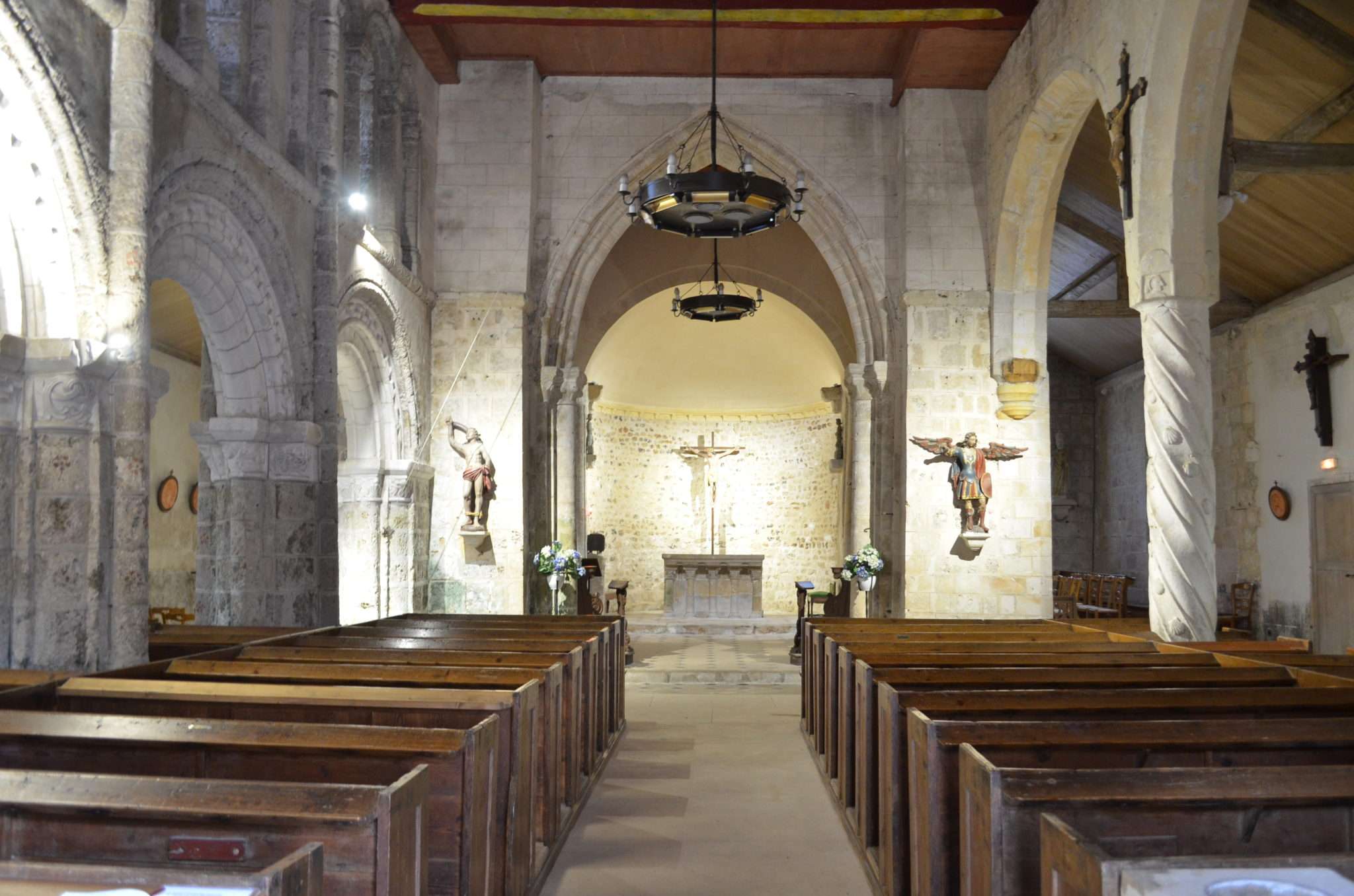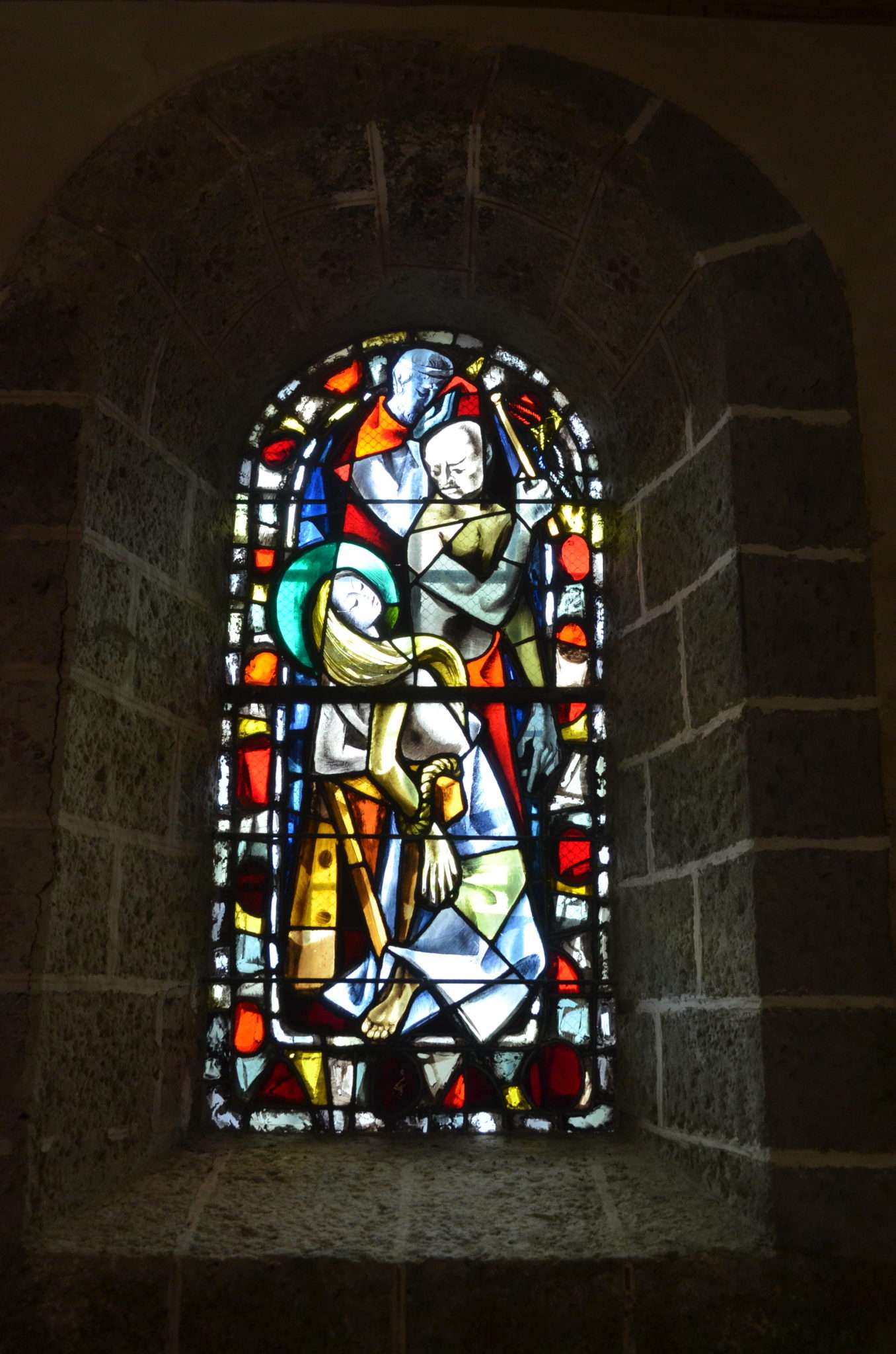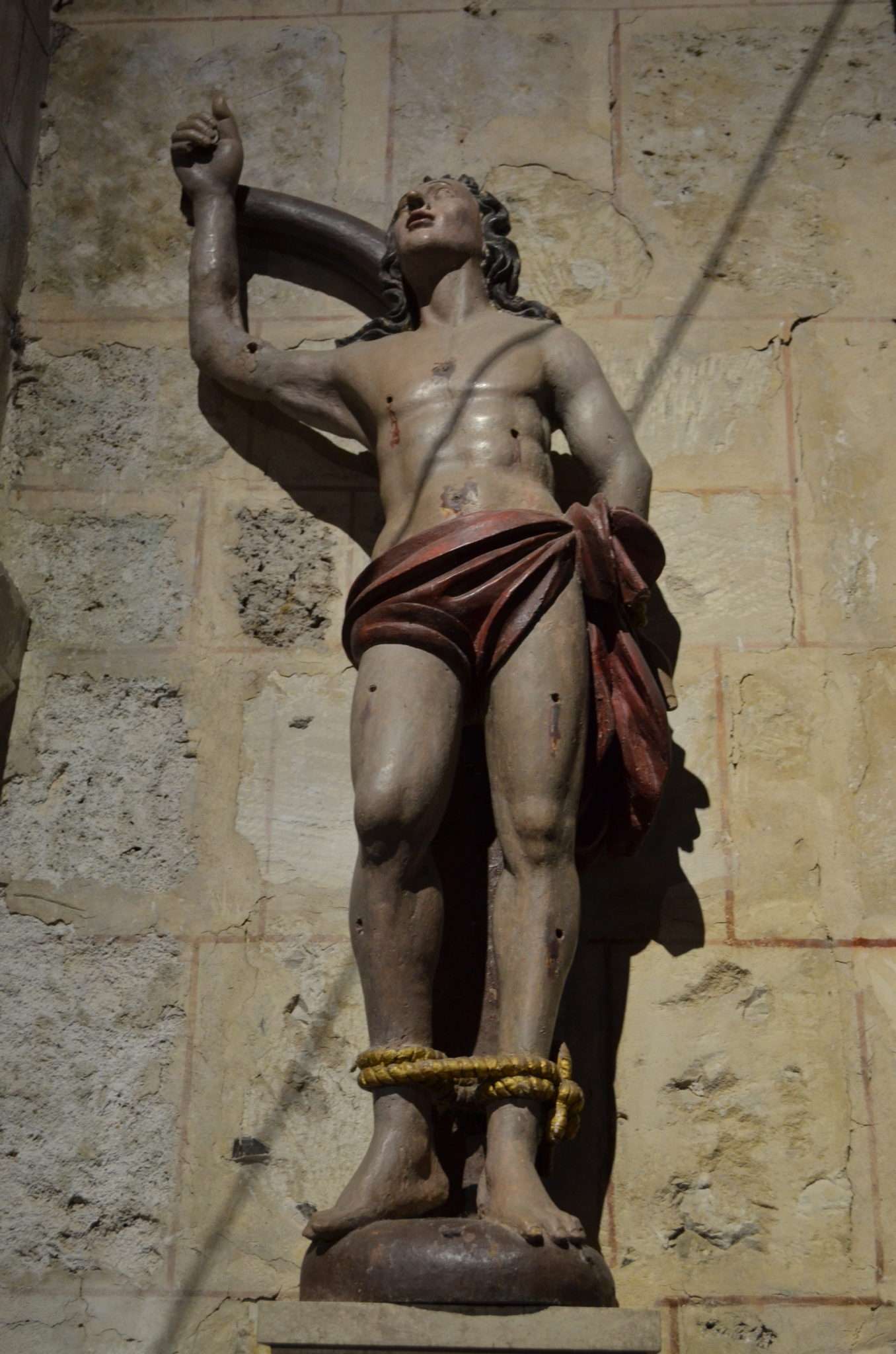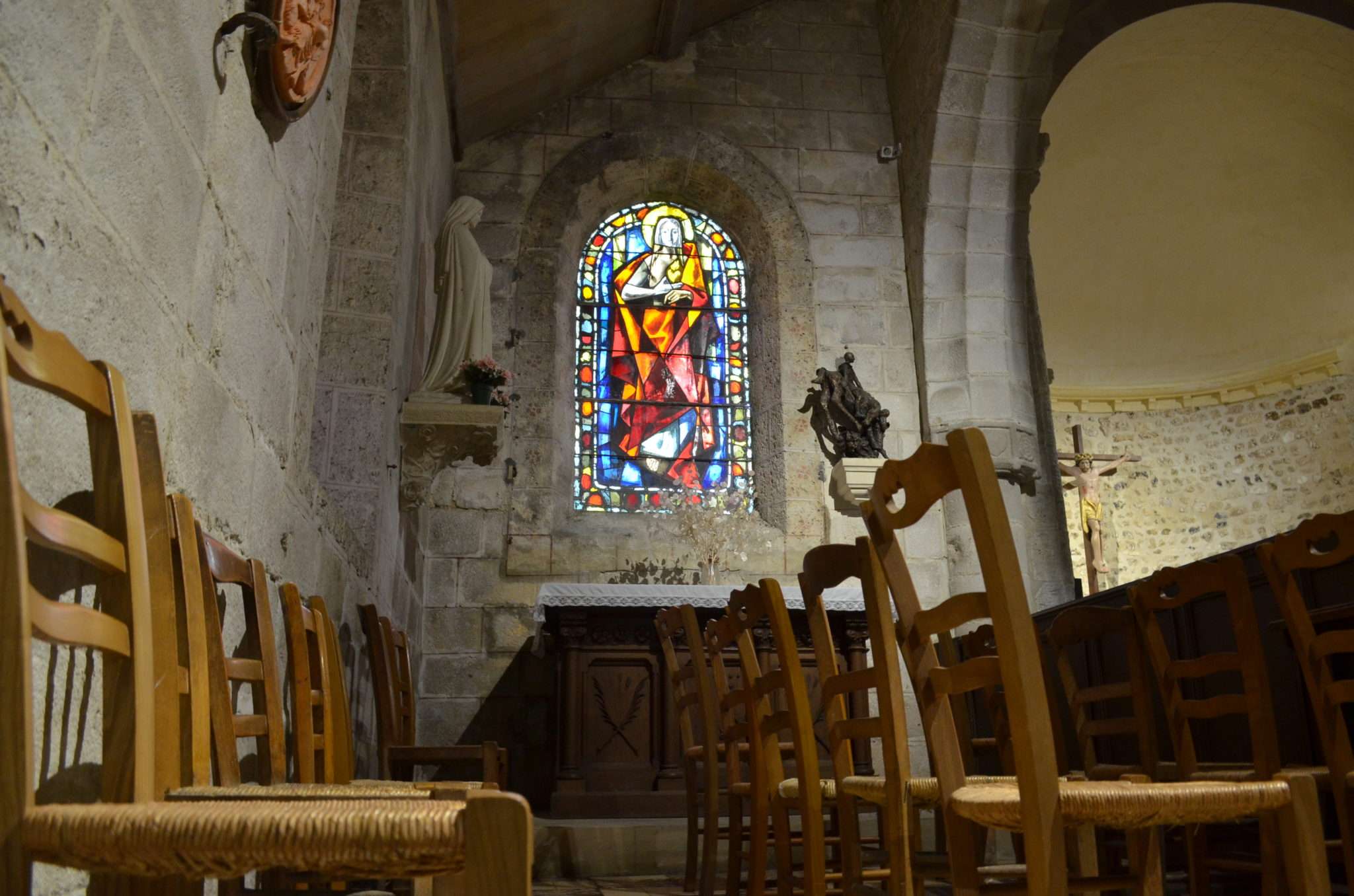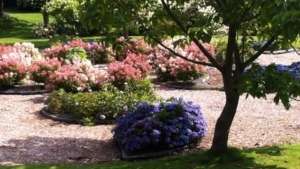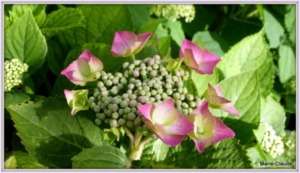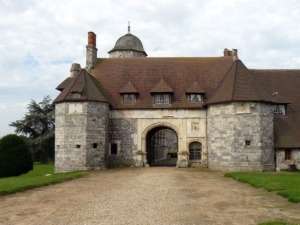
DÉCOUVRIR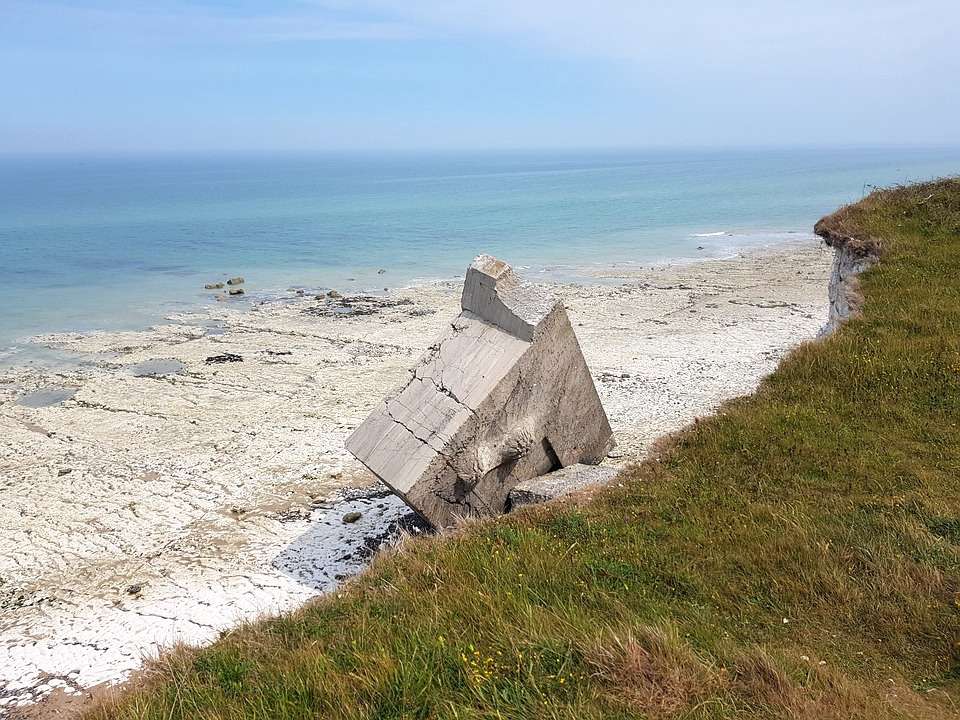 LA CÔTE D’ALBATRE
LA CÔTE D’ALBATRE
Retrouvez dans cette section tous les conseils découverte certifiés des promeneurs aguerris de Sainte-Marguerite sur Mer ! Du phare d’Ailly au Manor d’Ango en passant par les jardins de Vasterival, il y en a autant pour les amateurs de chevaux que pour les amoureux de la mer ou encore les inconditionnels adeptes des promenades dominicales.
Sélectionnez un lieu à découvrir sur la colonne de gauche
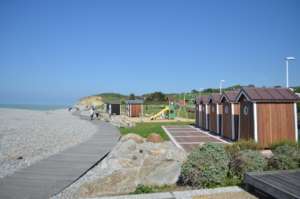
Plage de Sainte-Marguerite
Elle est caractéristique de la région avec sa grève de galets et ses grandes étendues de sable découvertes à marée basse.
On y croise aussi bien des pêcheurs embarquant pour aller relever leurs casiers, que ceux qui viennent remplir leur panier de crevettes ou de bouquets.
Les baigneurs ne sont pas en reste grâce à la surveillance assurée tout au long de l’été par des maîtres nageurs. Les enfants trouveront une aire de jeux, les amateurs de pétanque, une piste réservée et les familles, des tables de pique nique.
Après la baignade ou les jeux, des douches permettent à tous de se dessaler, et pour ceux qui ont un petit creux, un service de restauration est disponible pendant la saison.
Les cabines qui sont alignées le long de la promenade peuvent être louées au mois ou pour des périodes plus courtes.
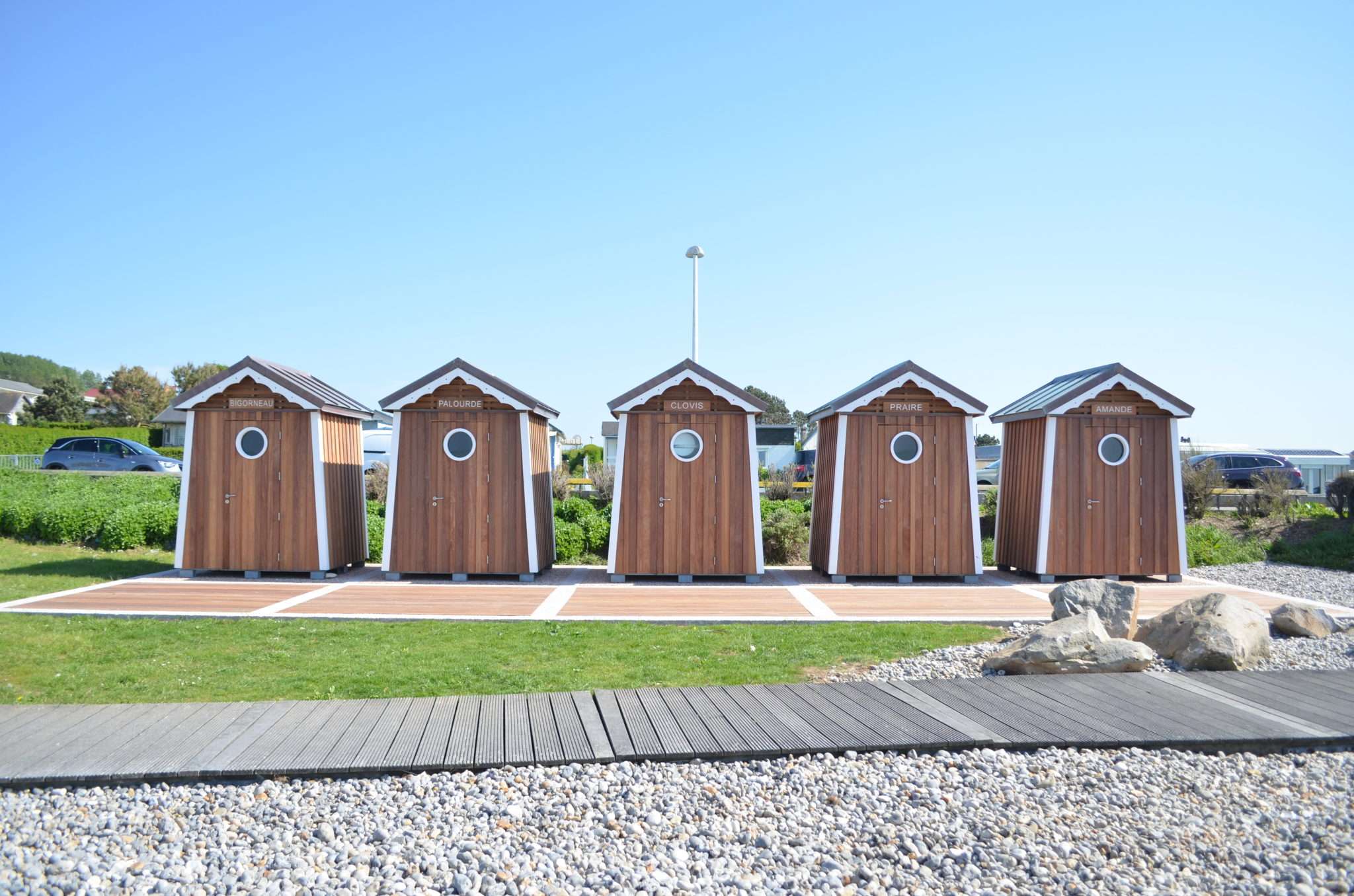
Le Phare d’Ailly
La zone rocheuse située sous la Pointe d’Ailly a provoqué, depuis toujours, de nombreux naufrages. En effet des rochers, tombés en mer du fait de l’effondrement de la falaise, constituent autant d’obstacles sur lesquels les navires viennent s’échouer.
Dès le 18e siècle, la question se pose de baliser cette zone à risques ayant connu pas moins de 40 naufrages en trois mois pour la seule année 1765.
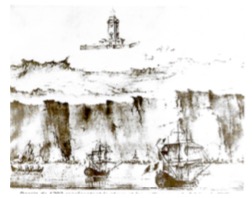 Le premier phare, Phare Pompadour, est mis en service en novembre 1775.
Le premier phare, Phare Pompadour, est mis en service en novembre 1775.
Situé à 156 mètres du bord de la falaise, il se présente sous la forme d’une tour carrée de 5,50 mètres de côté, posé sur un socle de 4,40 mètres de haut. Sa lanterne consiste en un feu ouvert, alimenté au charbon ; culminant à 22 mètres du sol, soit 100 mètres au-dessus de la mer mais nécessitant 600 kg de combustible par nuit… Hissés à dos d’homme !
En 1780, la lanterne est vitrée et le charbon laisse place à des réverbères à huile. Parallèlement, une maison de gardien est construite, ainsi qu’une usine de production de gaz d’huile. En 1852, un feu tournant est installé – le premier en France – équipé des lentilles de Fresnel ; portant ainsi la visibilité du phare à 30 kilomètres.
L’érosion de la Pointe d’Ailly menaçant le phare, décision est prise, en 1897 d’en construire un nouveau, plus éloigné du bord de la falaise.
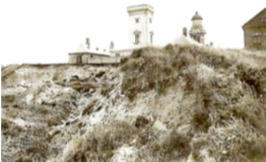 Edifié 90 mètres en retrait de son prédécesseur, le nouveau bâtiment présente une structure en briques rouges érigé sur un socle de pierre. Sa lanterne cylindrique culmine à 100 mètre au-dessus
Edifié 90 mètres en retrait de son prédécesseur, le nouveau bâtiment présente une structure en briques rouges érigé sur un socle de pierre. Sa lanterne cylindrique culmine à 100 mètre au-dessus
du niveau de la mer.
Inauguré en 1899, il se verra équipé, en 1903, de lampes à incandescence au gaz de pétrole ; portant ainsi sa visibilité à 40 kilomètres.
Il faudra cependant attendre 1932 pour son électrification.
Après le débarquement du 19 août 1942, le phare est éteint, l’optique mise à l’abri, de même que
le mercure.
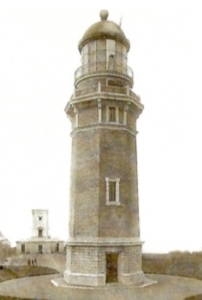
 Le 31 août 1944, les Allemands dynamitent le bâtiment. La reconstruction devra attendre ; la France ayant d’autres priorités en 1945 !
Le 31 août 1944, les Allemands dynamitent le bâtiment. La reconstruction devra attendre ; la France ayant d’autres priorités en 1945 !
1949, le socle du premier phare reprend du service avec une lanterne provisoire….
Provisoire qui durera jusqu’en 1958 avec la mise en service du phare actuel, d’une portée de 45 kilomètres, caractérisé par ses 3 éclats groupés entrecoupés de 12 secondes d’obscurité.
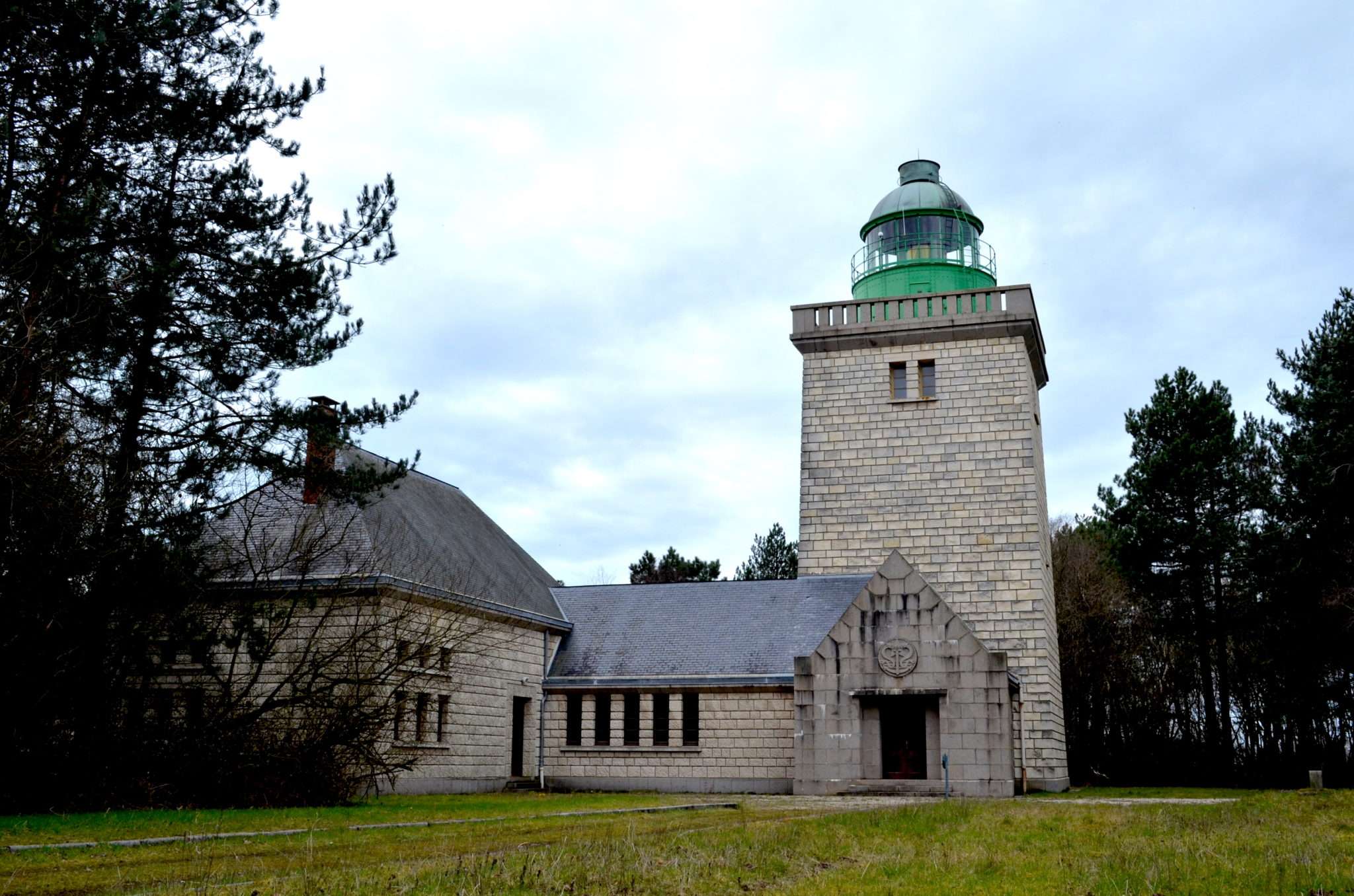
Les Sentiers
|
Sainte Marguerite-sur-Mer s’étend sur 541 hectares et en partie sur le site de l’Ailly. |
| Carte des sentiers
Les principaux circuits sont balisés à partir de deux points de départ (D1 et D2) et de trois centres d’intérêt : l’église, le phare d’Ailly et un circuit de nature.
|
 Le Sentier Nature
Le Sentier Nature
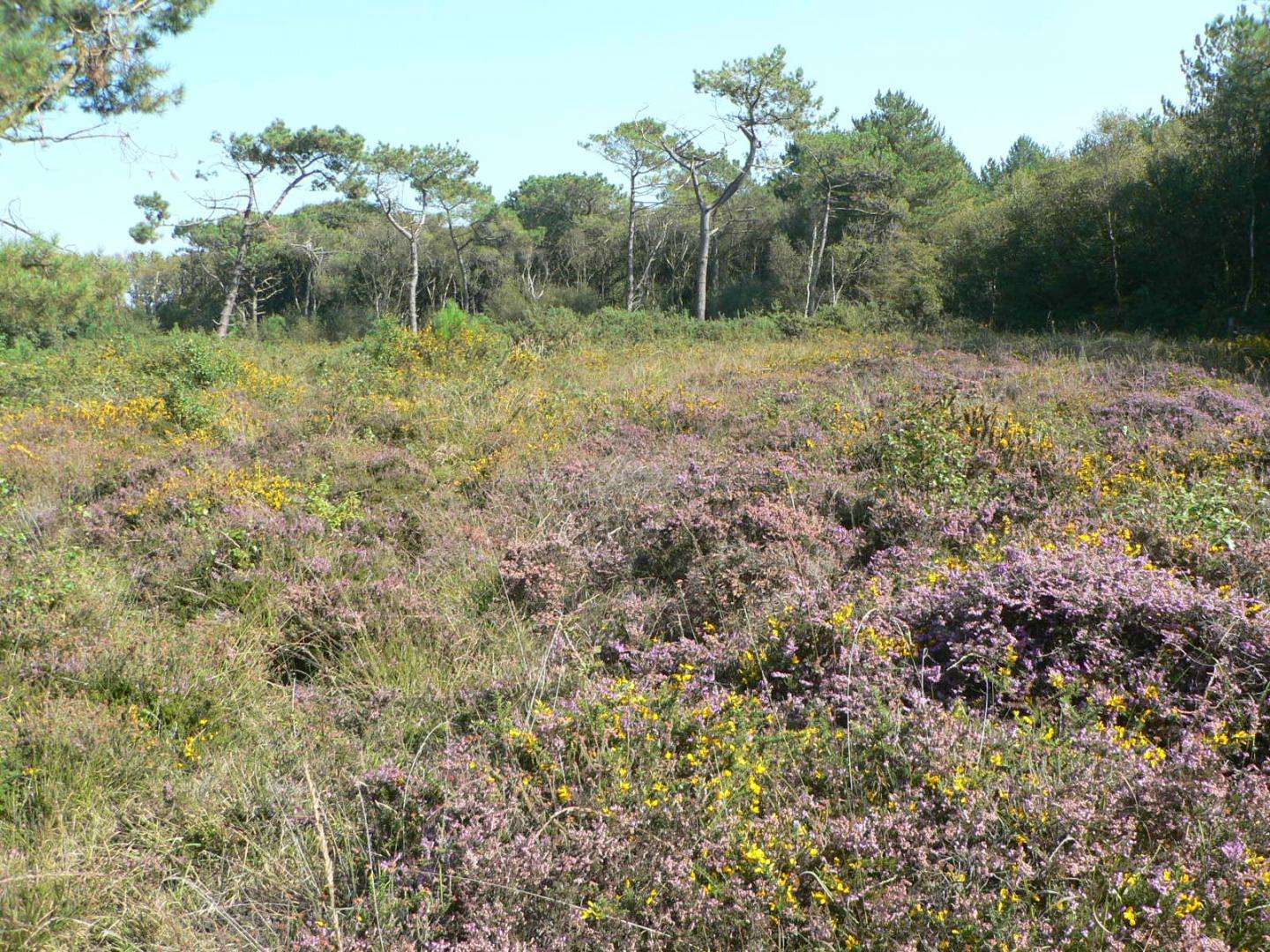
Le site du Cap d’Ailly est l’un des rares massifs forestiers du haut de falaise dans notre région. C’est un lieu exceptionnel sur de nombreux points de vue : géologique, floristique, faunistique et paysager.
Ce boisement appartient pour une grande partie à la commune de Sainte Marguerite sur mer et au Conservatoire du Littoral (environ 50 ha). On y retrouve une véritable mosaïque de milieux : Futaie de pins, taillis de feuillus, landes humides atlantique, réseau de mares…
De nombreuses espèces protégées sont présentent sur le site.
Des caractéristiques géologiques uniques en Normandie
Le site est situé sur le « synclinal de Varengeville », caractérisé par une faible élévation des falaises de craies (35 mètres au plus bas). Les formations tertiaires qui se sont accumulées au-dessus sont uniques en Normandie.
La présence de nappes phréatiques (entre 2 et 12 mètres de profondeur) qui s’écoulent vers la mer engendre une érosion importante des falaises caractérisée par un profil de glissement de trois sous falaises appelées « frettes ».
Une érosion intense
Ces formations se caractérisent par des nappes aquifères au sommet des argiles et dans les niveaux sableux ou caillouteux. Il en résulte une forte instabilité due à l’alternance de matériaux perméables (sables) et imperméables (argiles), saturés par l’eau des deux nappes qui s’écoulent vers la mer. Dans ces conditions, il se forme un front d’érosion de 4 Km de long sur 50 à 250 m de large. Ce sont les « frettes », où des pans entiers de matériaux en place se décollent et forment des crevasses pour glisser sur les replats. Elles se composent schématiquement de 3 arrières falaises et 3 replats plus ou moins masqués par les glissements de terrains.
L’érosion agit sur le haut de falaise (-80 m depuis 1930) et sur le bas de la falaise (-60 m en 100 ans).
Le premier phare (1775) situer à 156 m des frettes s’est écroulé en 1964, soit un recul moyen annuel de 0,90 m.
La régression peut être localement spectaculaire. En 1966, à une distance de 300 mètres du phare, la falaise à reculé de 250 m en 18 mois, soit 166 m/an.
Le suivi du bord des falaises au G.P.S. (Global Positionning Système) a permis de constater que le recul avait été de 20 m en 9 ans (dessin du trait de côte sur le plan cadastral de 1991), soit une moyenne de 2 m/an.
 La flore du bois de l’Ailly
La flore du bois de l’Ailly
L’eau est omniprésente sur le site et a permis l’installation d’une flore tout à fait particulière, similaire à celle des massifs cristallins d’Ecosse et de Bretagne.
En effet l’humidité du sol et le caractère acide des matériaux géologiques du tertiaire ont engendré des paysages de lande atlantique humide uniques dans le département.
Néanmoins, l’abandon des activités pastorales très présentes au début du siècle dernier entraîne irrémédiablement un boisement des terrains et donc une modification des caractéristiques floristiques du secteur.
Ainsi, la végétation du site est largement dominée par les peuplements forestiers (pinèdes, futaies et taillis). Toutefois, on rencontre encore de nombreuses landes relictuelles de faibles surfaces. Certaines sont très dégradées par la molinie bleue (une graminée envahissante) et la colonisation spontanée des ligneux. On peut malheureusement craindre une banalisation des milieux.
Aujourd’hui, 196 espèces végétales ont été recensées par le Conservatoire des Sites Naturel de Haute-Normandie.
Selon l’ « Inventaire de la flore vasculaire de Haute-Normandie » 42 espèces se dégagent du lot :
- 3 espèces exceptionnelles
- 6 espèces très rares
- 3 espèces rares
- 9 espèces assez rares
- 21 espèces peu communes
La grande majorité de ces plantes est inféodée aux milieux ouverts du site et en particulier aux landes.
Les espèces végétales les plus menacées sont les suivantes :
|
Menace |
Nom scientifique |
Nom français |
Protection |
|
Espèces gravement menacées d’extinction |
Genista anglica |
Genêt d’Angleterre |
Régionale |
|
Epipactis palustris |
Epipactis des marais |
Régionale |
|
|
Salix repens subsp . repens |
Saule rampant |
||
|
Ulex gallii |
Ajonc de Le Gall |
Régionale |
|
|
Espèces menacées d’extinction |
Drosera rotundifolia |
Rossolis à feuilles rondes |
Nationale |
|
Erica tetralix |
Bruyère à quatre angles |
|
|
|
Pedicularis sylvatica |
Pédiculaire des bois |
|
|
|
Espèces vulnérables |
luzula multiflora congesta |
Luzule ramassée |
|
|
Juncus bulbosus |
Jonc bulbeux |
|
Toutes ces espèces sont menacées d’extinction à l’état sauvage à plus ou moins long terme dans la région Haute-Normandie. Le cap d’Ailly joue donc un rôle de tout premier plan dans la protection et la conservation d’espèces végétales menacées localement.
L’intérêt floristique est donc indéniable. Cependant, les espèces remarquables sont pour la plupart liées à la présence des landes et les espèces exceptionnelles et protégées sont exclusivement inféodées aux milieux ouverts.
Les landes constituent donc l’intérêt majeur du site d’un point de vue botanique.
La faune du Cap d’ailly

L’avifaune
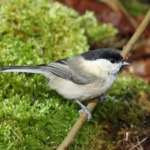
Mésange boréale.
Le Cap d’Ailly, compte tenu de la diversité des milieux naturels en présence, constitue un écocomplexe très favorable, à la fois pour la nidification de plusieurs espèces d’oiseaux, mais aussi comme étape migratoire pré et postnuptiale et comme station d’hivernage.
Un inventaire réalisé par le Groupe Ornithologique Normand a permis d’observer 75 espèces d’oiseaux sur le site ou aux abords de celui-ci.
Quelques espèces peu communes sont à signaler :
- Mésange boréale
- Mésange noire
- Pétrel fulmar
- Chouette chevêche
- Hibou moyen duc
- Pic noir
Les mammifères
Le site du Cap d’Ailly et plus particulièrement le bois accueille régulièrement 16 espèces de mammifères.
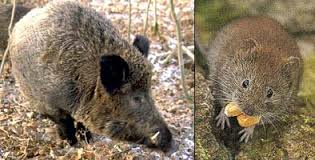
|
Insectivores :
|
|
|
Canidés :
|
|
|
Lagomorphes :
|
|
|
Rongeurs :
|
|
|
Artiodactyles :
|
|
|
Mustélidés :
|
|
Les Amphibiens 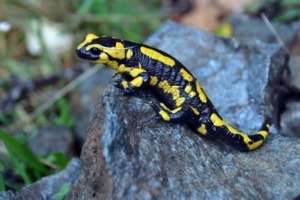
9 espèces d’Amphibiens sont fréquemment observées sur le site : – Salamandre tachetée Au centre de la partie ouest du bois se situe une mare relativement ancienne qui avait la réputation d’être l’une des plus riches de la Haute-Normandie pour ses amphibiens. |
Les reptiles 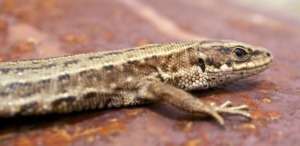 3 espèces sont présentes :- Lézard vivipare 3 espèces sont présentes :- Lézard vivipare– Orvet – Vipère péliade |
Les Orthoptères (criquets, sauterelles et grillons)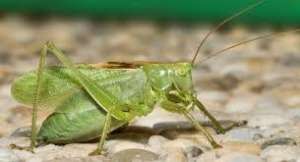
Dix espèces ont été identifiées par le Conservatoire des Sites Naturels de Haute-Normandie en 2002
* La Decticelle des bruyères fréquente essentiellement les landes humides à bruyère. |
Une gestion concertée Depuis de nombreuses années la Commune de Sainte Marguerite-sur-mer a pris la mesure de la richesse de son territoire. Elle s’est donc efforcée de s’entourer de partenaires technique et financier à la hauteur des enjeux patrimoniaux du Cap d’Ailly. Ainsi, un comité de gestion se réunit au moins une fois par an pour cautionner les différentes interventions réalisées sur le site. – En 1996, la commune a signé une servitude de protection du Cap d’Ailly avec le Conservatoire de l’Espace Littorale et des Rivages Lacustres. Depuis cette date, cet organisme finance des travaux de réhabilitation écologique et procède à l’acquisition de nouveaux terrains limitrophes au site. – Depuis 1999, le Cap d’Ailly est classée comme Espace Naturel Sensible de Seine-Maritime. Le Conseil Général s’engage aux cotés de la commune afin de gérer et de valoriser le site. – D’autres partenaires interviennent régulièrement dans la gestion du Cap d’Ailly en apportant leur contribution technique ou financière : Conservatoire des Site Naturel de Haute Normandie, Office National des Forêts, Agence de l’eau … |
Principaux axes de gestion Afin de mieux connaître l’état du milieu naturel et en dégager une politique de gestion, le Conservatoire du Littoral a financé une étude et l’élaboration d’un plan de gestion sur 10 ans. |
Les milieux ouverts : constat : Au début du siècle dernier, le Cap d’Ailly était beaucoup moins boisé qu’aujourd’hui. De nombreuses activités pastorales entretenaient les landes du secteur. La colonisation de ces milieux par la forêt a entraîné la banalisation de la flore. actions préconisées : Accroître les surfaces de milieux ouverts. Ceci en réouvrant quelques clairières dans le bois de l’Ailly, le cortège floristique des landes devrait alors réapparaître. Puis il faut réinstaurer un pâturage afin d’entretenir ce biotope. Ainsi depuis 2002, des moutons de race rustique du Conservatoire des Sites Naturels de Haute-Normandie interviennent sur le site. |
Les milieux forestiers : constat : Ils se décomposent en deux modes sylvicoles – Les taillis de feuillus très appauvris (bouleau et chêne), et les futaies de résineux vieillissantes (pin maritime et pin sylvestre). actions préconisées : Dans les taillis de feuillus, il faut réaliser des éclaircies forestières en favorisant les essences d’arbres les moins représentées. Le but est de dépresser les arbres et de diversifier le peuplement. |
Les milieux humides : constat : Le Cap d’Ailly possède de nombreuses mares qui en font un site de reproduction très important pour les amphibiens. Les mares forestières se comblent très rapidement. |
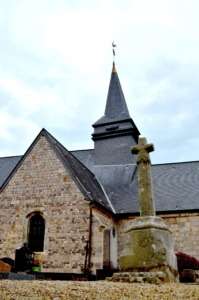 L’église romane
L’église romane
Une architecture du XII° siècle qui s’exprime dans un bas-côté roman d’une grande sobriété. L’abside date de la même époque et l’autel de pierre est considéré comme le plus ancien du pays de Caux.
La partie droite de l’église date du XVI° siècle. Les vitraux modernes qui éclairent l’ensemble de chaudes couleurs sont signés Max Ingrand. L’église est ouverte dans la journée et on peut s’y procurer une intéressante brochure sur l’édifice
.
Les jardins de Vasterival
|
Créé en 1957 par la Princesse Sturdza, ce jardin de neuf hectares, pensé et calculé au centimètre prés, bien protégé du vent par une haie de cyprès, de bouleaux et de saules, regroupe 10.000 espèces de végétaux et reste magique en toute saison. |
| Visite guidée tous les jours sur rendez-vous pour des groupes de 5 à 25 personnes.
Jardins de Vasterival Tél. : 02 35 85 12 05 |
| E-mail : levasterival@orange.fr |
| Website : http://www.vasterival.fr |
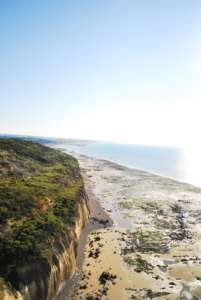
Valleuse et plage de Vasterival
Cette brèche verdoyante dans la ligne des falaises plonge vers une plage réputée pour son calme et la pêche à pied que l’on peut y pratiquer.
La valleuse est bordée par le bois de Vasterival qui remonte, d’un côté, jusqu’à l’Ailly, son bois et son phare, et de l’autre jusqu’à l’église Saint-Valéry et le Bois des Moutiers à Varengeville sur Mer.
En remontant la route de quelques centaines de mètres, vous pourrez vous désaltérer ou vous restaurer à l’hôtel-Restaurant « La Terrasse ».
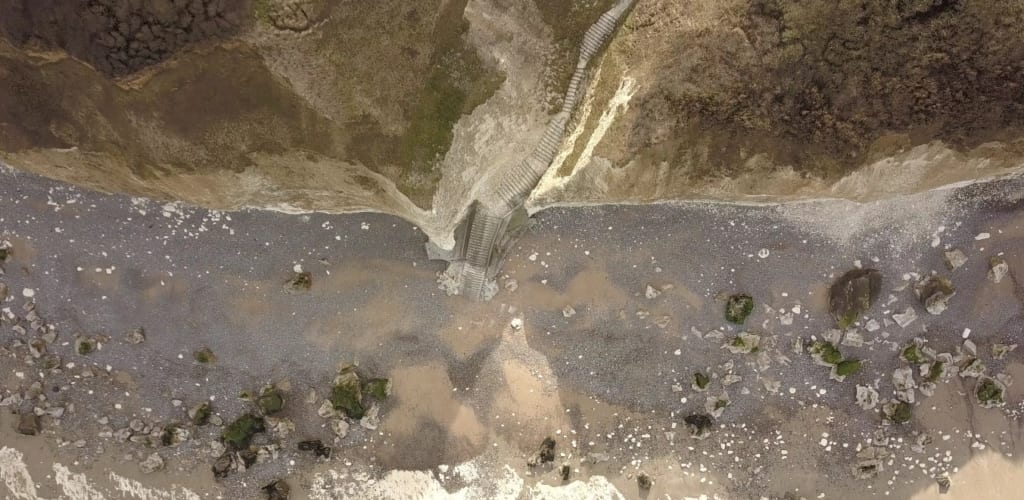
Chateau-musée de Dieppe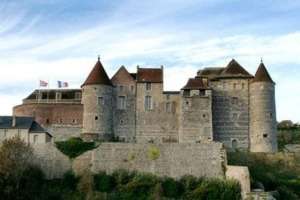
Seul monument – avec les églises St Rémy et St Jacques – à avoir survécu au bombardement anglo-
hollandais de 1694, le Vieux-Château abrite la mémoire maritime de la ville et l’une des plus belle collection d’ivoires en Europe.
Rue de Chaste
76200 Dieppe
Tél : 02 35 84 19 76
Fax : 02 32 90 12 79
Eglise St-Valéry et chapelle St-Dominique à Varengeville
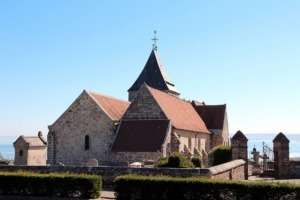
L’église Saint-Valéry est réputée et est l’objet d’une visite à ne pas manquer.
Tout d’abord parce qu’elle a été construite en bordure de falaise offrant ainsi une vue imprenable sur la mer et le trait des falaises. Mais également pour ses vitraux dont celui réalisé par George Braque qui repose dans le cimetière entourant l’église.
D’autres vitraux de George Braque ainsi qu’un tableau de Maurice Denis sont visibles dans la chapelle Saint-Dominique qui se trouve sur la route principale (D75) qui traverse Varengeville sur Mer entre Sainte Marguerite et Dieppe.
Jardin Shamrock, collection mondiale d’hortensias et d’hydrangéas
|
Ce jardin d’une superficie de deux hectares abrite une des plus importantes collections d’hortensias et d’hydrangéas. De renommée mondiale, cet écrin de verdure comprend 2000 plants, dont 1200 variétés différentes (espèces, sous-espèces et cultivars) issues de la nature et des sélections obtenues depuis plus d’un siècle par les horticulteurs. |
|
Cette collection a été réunie par Corinne Mallet depuis 1984. Certaines plantes de cette collection sont uniques dans le monde occidental. Elles proviennent le plus souvent du Japon , berceau d’un grand nombre d’espèces d’Hydrangea. La collection est organisée en deux zones. La première en forme de labyrinthe où chaque plate-bande est consacrée à un obtenteur, par pays ou région du monde. Cette disposition permet une compréhension aisée du monde des Hydrangeas, et fait de la Collection Shamrock un « musée vivant » de ce genre. Les plates-bandes sont dans un écrin de verdure de paulownias et buddleias, pourvoyeurs de l’ombre nécessaire à la majorité des variétés. La deuxième zone est boisée: le Bois du Dragon où sont cultivées des espèces des sous-bois asiatiques. |
|
Périodes d’ouverture : Tous les jours sauf le mardi matin du 15 juin au 15 septembre de 10h00 à 12h00 et de 14h30 à 18h00 (du 16 au 30 septembre ouvert tous les après midi sauf mardi). Collection Nationale C.C.V.S. Tél. : 02 35 85 14 64 |
| Website : http://www.hortensias-hydrangea.com |
Le Parc du Bois des Moutiers à Varengeville sur Mer
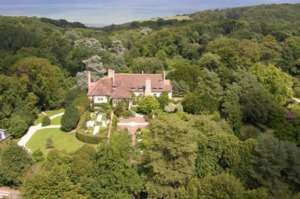 Autour d’une maison construite en 1898 par l’architecte britannique Sir Edwin Lutyens, la famille Guillaume Mallet, créateur des lieux, vous invite à explorer un ensemble de jardins clos unique en France où se mêlent harmonieusement couleurs et parfums.
Autour d’une maison construite en 1898 par l’architecte britannique Sir Edwin Lutyens, la famille Guillaume Mallet, créateur des lieux, vous invite à explorer un ensemble de jardins clos unique en France où se mêlent harmonieusement couleurs et parfums.
Après la chambre de verdure, le promeneur découvre le grand parc paysager aux floraisons spectaculaires : les magnolias de Chine, les azalées de Turquie, les rhododendrons géants de l’Himalaya (qui atteignent 12 m de haut !) et la collection d’hortensias bleus avec en toile de fond l’église et la mer toute proche.
Le Bois des Moutiers
76119 Varengeville-sur-Mer
Tél : 02 35 85 10 02
Le Manoir D’Ango
|
Ancien palais d’été de Jehan Ango, armateur richissime et mécène, le Manoir d’Ango est un monument unique, avec son exceptionnelle architecture Renaissance italienne, son pigeonnier, qui passe pour le plus beau de France, son site, son parc… Le Manoir d’Ango a été l’un des premiers monuments classé monument historique, en 1862. Il enchantera les amateurs de vieilles pierres. |
 Cour intérieure et pigeonnier du Manoir d’Ango Jours d’ouverture :
Horaires d’ouverture : de 10 h à 12 h 30 et de 14 h à 18 h Contact details : Manoir d’Ango 76119 Varengeville-sur-Mer Tél. 02 35 04 19 94 – 06 72 09 08 67 |
| E-mail : contact@manoirdango.fr |
| Website : http://www.manoirdango.fr |
Pourville sur Mer
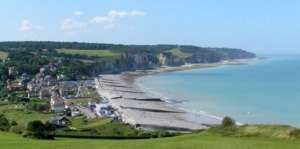
Située entre Sainte Marguerite et Dieppe, Pourville est une petite station balnéaire où vous pourrez déguster des fruits de mer dans les restaurants qui longent la plage.
Ne pas manquer le point de vue dans un des virages qui remontent vers Dieppe. Un parking y a été aménagé afin que vous puissiez vous y arrêter pour admirer un des plus beaux panoramas de la côte.

